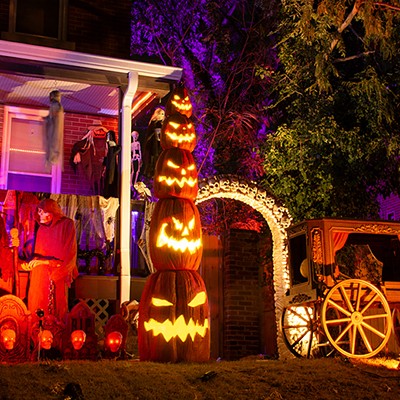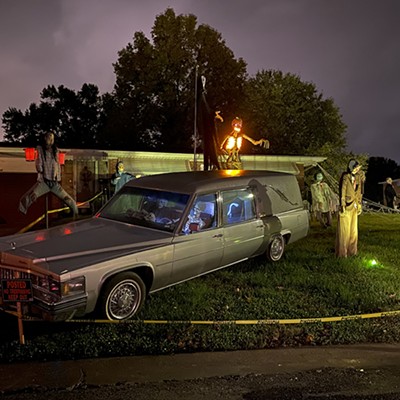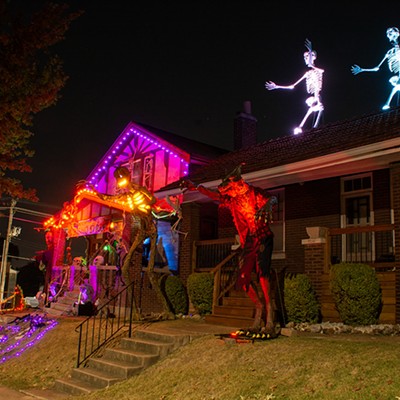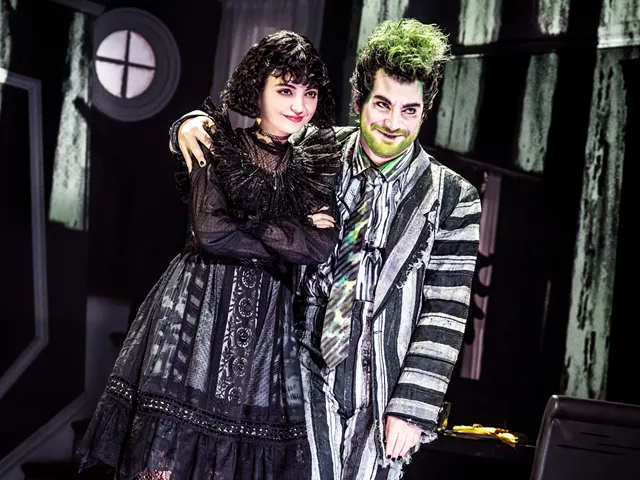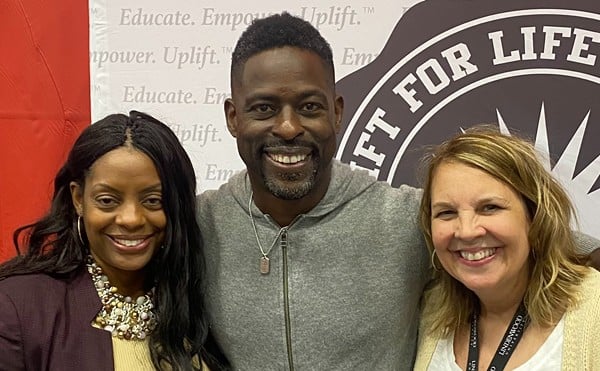One of Saint Louis University’s most popular courses is Vampires: Then and Now, taught by the charismatic Russian-born Sergey Toymentsev. The assistant professor of Russian considers the vampire story a great way to “smuggle” hardcore knowledge to students, saying he can use these tales to explore not only literature and history but everything from psychoanalysis to post-colonial theory. Plus, he adds, “We are all obsessed with vampires.”
Toymentsev recently joined us to share his favorite recent vampire movie — and whether he’s prepared for a vampire encounter on the streets of St. Louis.
This conversation has been edited for clarity and length.
What was the first vampire story? How far back do you have to go?
You probably noticed that in movies, vampires have a thick Slavic accent, and names like Dragomir or Vladislav. Well, that's because they are originally Slavic, and to get to the very essence of the vampire story, we need to consider their folklore beliefs. East Europeans are very much preoccupied with the issue of death, or rather with the transition from life to death, and this is why they pay so much attention to the exactness of their funeral rites. If something goes wrong or messy in a funeral procedure, it seems a person won't be able to die properly, and the vampire is born as a result.
But in East European folklore, the vampire is so much more than that. It served as a universal scapegoat for all the troubles you can imagine: epidemics, famine, harvest failure, any problem in the household. If any calamity happens in a village, you don't go too far; you just blame a vampire, and then you hire a vampire slayer, who supposedly finds and kills it. And the problem is solved.
This is the folklore vampire tradition, which is almost completely forgotten in Eastern Europe by now. The vampire we know from movies and literature is a completely different creature. It came to us thanks to the European writers being fascinated with East European folklore in the 19th century. So the vampire we know actually was born, or reborn, in the 19th century by Lord Byron, his friend John Polidori and Irish Gothic writers Sheridan Le Fanu and Bram Stoker. All of them diligently studied vampire folklore and then reinvented the vampire as an entirely new character: aristocratic, hypersexual, even homosexual, insanely rich, morally corrupt, cynical.
Are there commonalities between those two eras?
In both folklore and literary traditions, vampires usually provide some kind of social commentary. For example, in folk tales, anyone who violates the norms of traditional patriarchal society — it could be a girl who doesn't want to get married or a father who refuses to take care of his kids or a desperate lover who commits suicide because of unrequited love, or a handsome stranger stalking young girls — all these guys could be vampires because they violate the noms of traditional society. And by this, vampire folk tales tell us how one is supposed to live a good life, a proper life.
You could not talk about homosexuality in the 19th century, so the vampire becomes a vehicle by which they expressed that kind of stuff.
Even so, in today’s popular culture, vampires usually address nothing.
Nothing?
Well, by recycling familiar romantic tropes, most vampire movies such as Twilight function as no more than a mindless spectacle. If contemporary vampires do address social issues, these stories immediately stand out as a real piece of art. For example, the recent film The Last Voyage of the Demeter, about Dracula's coming to London. What can it tell us about our society today? Well, one of the major themes of Bram Stoker's Dracula is the geopolitical anxiety about what chaos and destruction the Eastern European monster like Dracula could bring to Western civilization. And the movie brilliantly conveys precisely this geopolitical anxiety, as Dracula is coming to London on the Russian ship. You know?
What do you consider a favorite vampire movie?
Personally, I'm a big fan of Jim Jarmusch’s drama Only Lovers Left Alive, which tells us that vampires are actually perfect, the best creatures in the world — and us, the humans, are the bad guys because of bad nutrition, climate change, intellectual degradation, wars, you name it.
I can see why your vampire class is so popular at SLU. Do you have to turn people away?
Once it's open for enrollment, it's filled out instantly. And in spring, I teach two sections of it, and again, it’s quite popular.
You have your students create a vampire survival guide. What's your No. 1 piece of advice for surviving an encounter with a vampire?
To survive such an encounter, one would need to rely on the sources of the East European folklore as they're referenced in a typical vampire movie. The violent way would be to drive a wooden stake through its navel and heart. But the peaceful way! We could use garlic as a natural deterrent and antibiotic and a crucifix and holy waters: Christian religious symbols promised to protect us from all supernatural evil.
Do you carry garlic as you're walking the streets of St. Louis?
I like eating garlic very much. But as a professor, can you imagine me lecturing after eating garlic? Yeah, that wouldn't be good.
Subscribe to Riverfront Times newsletters.
Follow us: Apple News | Google News | NewsBreak | Reddit | Instagram | Facebook | Twitter | Or sign up for our RSS Feed



